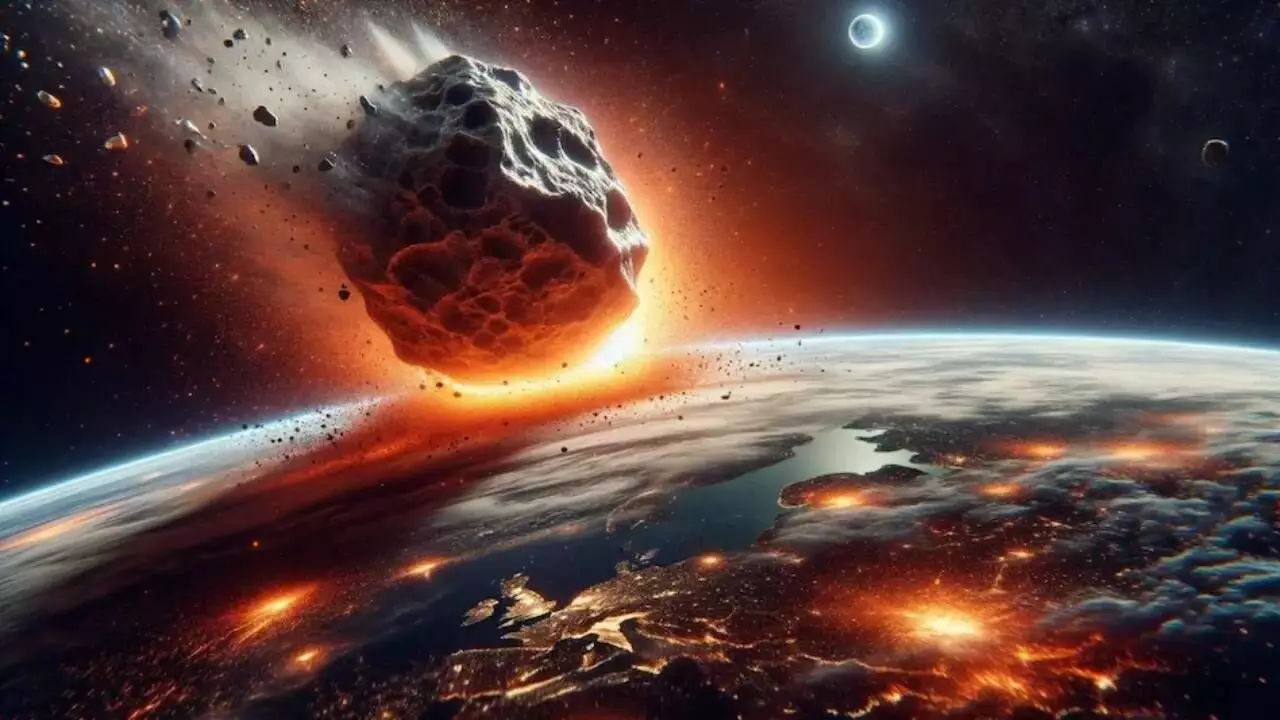Asteroid 2024 YR4 Might Strike Moon in 2032, Triggering Nuclear-Scale Explosion: What Scientists Say
Asteroid 2024 YR4 may strike the Moon in 2032 with nuclear-scale force, risking satellites. No threat to Earth, but space debris could pose challenges.
image for illustrative purpose

For now, the Earth is safe. The enormous space rock known as Asteroid 2024 YR4, which is almost 200 feet diameter, is no longer a direct threat to Earth. But in 2032, experts caution that it might strike the Moon, causing a devastating explosion on the lunar surface that might endanger satellites and other space equipment.
Moon Impact Remains a Serious Issue
Although there is now a much lower likelihood of the asteroid striking Earth, scientists from the University of Western Ontario predict that it has a 4% chance of striking the Moon. The impact might be the biggest lunar collision in 5,000 years if it occurs, releasing energy comparable to a massive nuclear explosion, or 6 million tonnes of TNT.
To put the Hiroshima bomb in perspective, it only required 15,000 tonnes of TNT to explode.
Potential Consequences of a Lunar Impact Should 2024 YR4 Collide with the Moon:
A crater a km across would be created.
- Debris from the moon might be launched into space in quantities of up to 100 million kilogrammes.
- Debris might move up to 10 km/s, which is far quicker than a bullet.
- Up to 0.2% of the debris, according to scientists, may escape into space and jeopardise satellites orbiting the Earth, even though the majority will return to the Moon.
Satellites, Not People, Are in Danger
Humans are not in danger, according to experts. Because of the density of Earth's atmosphere, we are shielded from tiny space debris. Space-based systems, such as GPS, weather, and communication satellites, could be at risk from swiftly moving lunar particles.
🌠 Might We See a Meteor Shower?
There could be a stunning meteor shower if some debris gets into the Earth's atmosphere. Larger fragments (at least one metre broad) may survive and make it to the surface, but the majority will burn up innocuously. Although it is anticipated that such events will be few, skywatchers might be treated to a sight.
The following observation window is 2028.
In 2028, astronomers will have another opportunity to examine 2024 YR4, which will aid in improving forecasts. Scientists are still keeping a careful eye on its track till then in order to determine the true risk of a lunar impact in 2032.

